Named for the Ohio River which borders it, Ohio is a stunning place with a wide variety of habitats that are teeming with wildlife. From the unique glaciated plains to large swamps, you’ll find animals of all sizes in Ohio. In fact, with different species, it is entirely likely that you’ll come across a snake or two while you’re out exploring. While snakes can be various colors, in this article we’re going to concentrate on the brown snakes in Ohio that you might encounter — including three that are dangerous!
1. Worm Snake (Carphophis amoenus)

©Jason Patrick Ross/Shutterstock.com
One of the smallest snakes in the state is the worm snake. Worm snakes are only seven to 13 inches long and have thin brown bodies which make them appear just like large worms. Worm snakes are burrowers and spend most of their time hiding in soft, moist soil in woodlands. However, they only occur in the extreme southern region of the state. Worm snakes produce a foul musk scent when they are handled but they do not bite.
2. Eastern Copperhead (Agkistrodon contortrix)
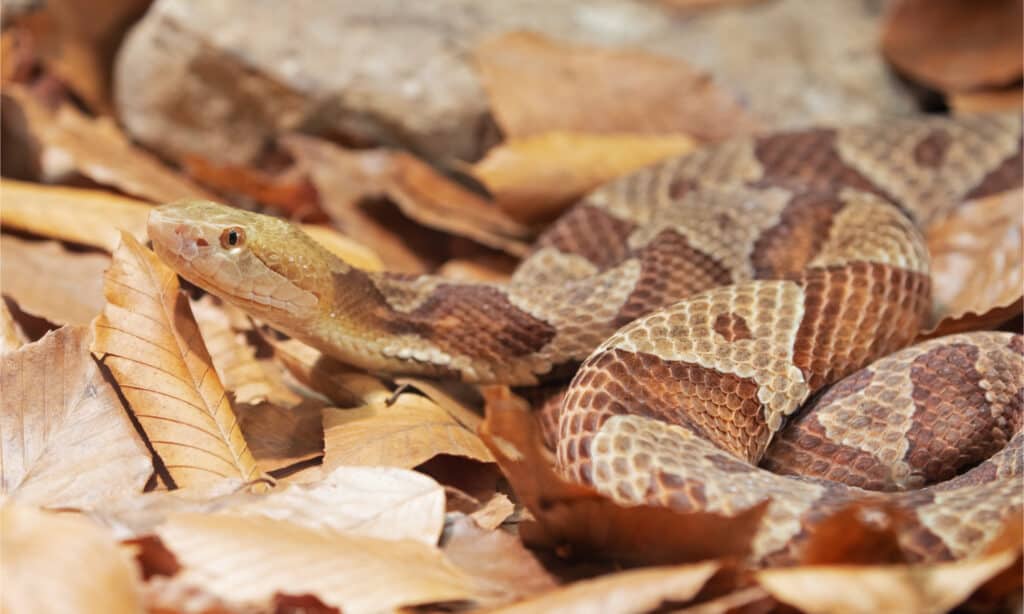
©DnDavis/Shutterstock.com
The first venomous snake that we’re going to talk about is the eastern copperhead, which lives in forests, prairies, rocky hillsides, and marshlands in the southeastern region of the state. Copperheads are 20 to 36 inches long and have a light brown body with reddish-brown crossbands. Although they are venomous they are not the most dangerous snake in the state. They have fairly weak venom and bites from these snakes are rarely fatal to healthy adults, although they are still incredibly painful. When copperheads are disturbed they will initially freeze or attempt to slither away to safety. However, if the threat persists, then they will vibrate their tail as a warning and strike in defense.
3. Smooth Earth Snake (Virginia valeriae)
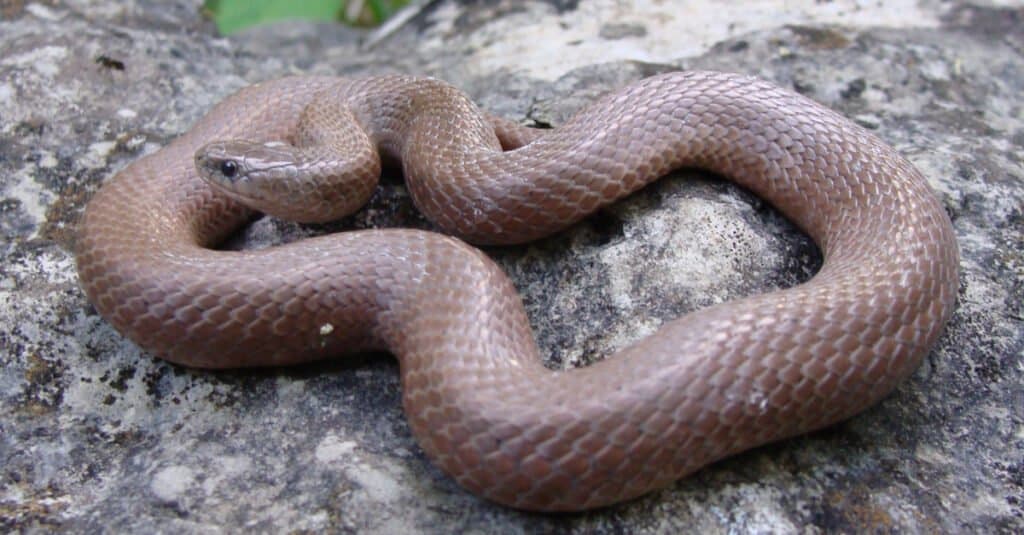
©Matt Jeppson/Shutterstock.com
The smooth earth snake is another small brown snake in Ohio and reaches approximately seven to ten inches long. They have slender brown bodies with smooth dorsal scales and a few black spots on their head. Smooth earth snakes live in forests in small populations in the southern region of the state — mainly in the Pike and Shawnee state forests. They spend a lot of their time buried in the leaf litter or underneath logs so they are rarely ever spotted. Smooth earth snakes are completely harmless and prey mainly on small, soft-bodied animals.
4. Northern Water Snake (Nerodia sipedon)

©Steve Byland/Shutterstock.com
The northern water snake is one of the most common snakes in Ohio. Occurring statewide, these snakes live in freshwater areas such as swamps, lakes, rivers, and ponds. They prey mainly on fish and amphibians which are grabbed and swallowed whole. Despite not being venomous, northern water snakes have a powerful bite and can inflict a serious wound with their teeth. They also have an anticoagulant in their saliva which prevents blood from clotting properly — resulting in a wound that bleeds profusely. Northern water snakes can reach almost five feet long and are dark brown with darker crossbands.
5. Massasauga (Sistrurus catenatus)
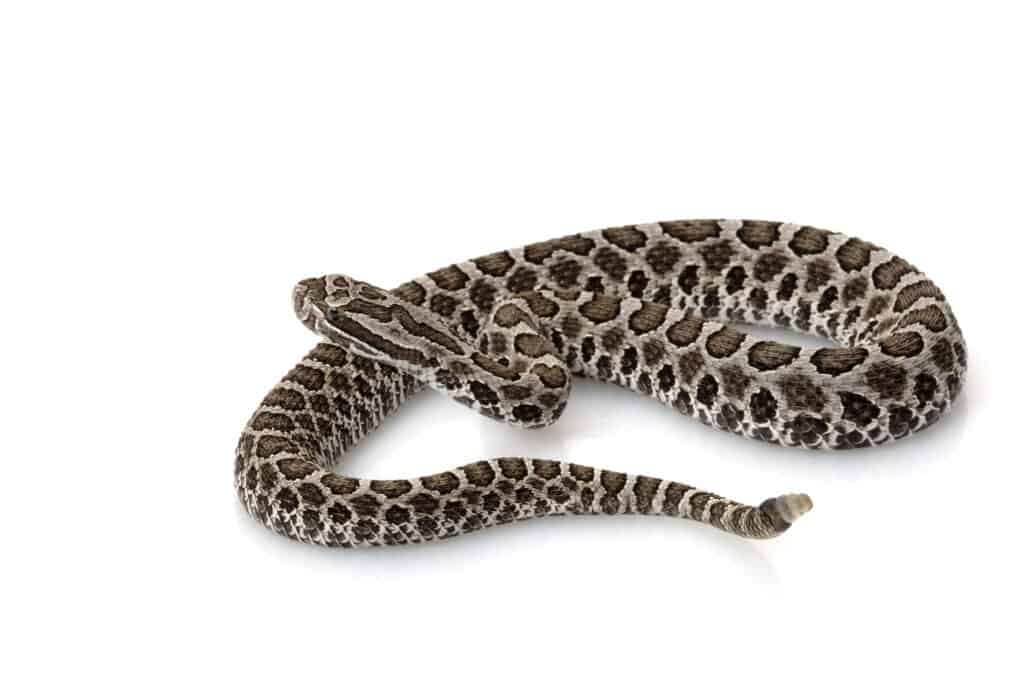
©fivespots/Shutterstock.com
The next venomous snake is the massasauga rattlesnake which is typically between 24 and 30 inches long. Massasaugas are greyish brown with large dark brown spots on their back. They also have alternating rows of smaller spots on either side. Although they were originally widespread across the state, massasaugas now only live in small, scattered populations in prairies across glaciated Ohio. Massasaugas have highly toxic venom but bites from them are rarely fatal as they do not have a high venom yield. They also have a fairly mild nature and do not usually strike unless as a last resort.
6. Kirtland’s Snake (Clonophis kirtlandii)

©Mike Wilhelm/Shutterstock.com
The next brown snake in Ohio is a threatened snake — Kirtland’s snake. Kirtland’s snakes are only 12 to 18 inches long and have distinctive red bellies. However, their dorsal side is greyish brown with large black spots running down the center of their back and smaller spots on either side. Kirtland’s snakes prefer to live in forests, woodlands, and grassland near a permanent water source. However, they only occur in a few counties in the western half of the state — most commonly Hamilton and Lucas. Kirtland’s snakes are not venomous but they will strike wildly while flattening their body when they are disturbed in an attempt to ward off the threat. Despite this, they actually rarely ever bite.
7. Eastern Ribbon Snake (Thamnophis saurita)
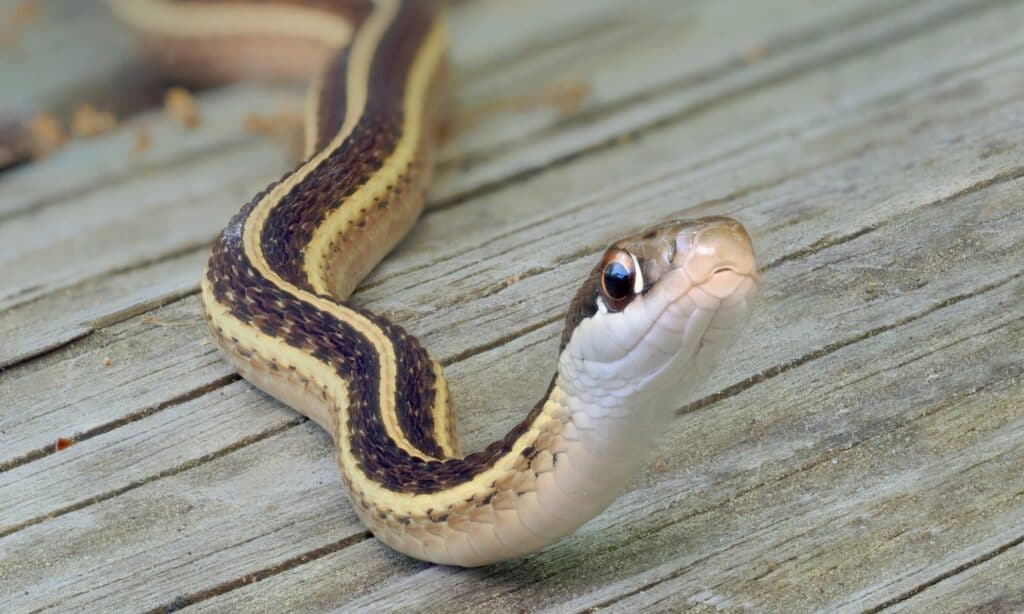
©iStock.com/sdbower
Occurring only in the northwest of the state, eastern ribbon snakes are rarely ever found far from water. They are semi-aquatic and live near ponds, swamps, lakes, and streams. They are not venomous and prey on a variety of fish and amphibians, which are typically always swallowed whole. Eastern ribbon snakes are 18 to 34 inches long and are brown to black with three yellow stripes. They have slender bodies which is why they are called ribbon snakes.
8. Timber Rattlesnake (Crotalus horridus)

©iStock.com/NajaShots
The most dangerous snake in the state is the large timber rattlesnake, which can attain lengths of up to five feet. They are powerful snakes with thick bodies that have a series of dark brown to black crossbands over a brown ground color. Timber rattlesnakes typically live in forests and on rocky hillsides in the southern region, with the forests of Pike, Shawnee, Tar Hollow, and Zaleski being the main locations. Timber rattlesnakes have long fangs and possess a high venom yield. They are not naturally aggressive until they are provoked, upon which they can strike repeatedly.
9. Queen Snake (Regina septemvittata)

©Nathan A Shepard/Shutterstock.com
The queen snake is another aquatic brown snake in Ohio, living in streams, ponds, and rivers. Queen snakes are typically between 14 and 23 inches long and have brown bodies with four darker stripes on their belly. They have a flattened head which is an adaptation to help them search for their preferred prey of crayfish between rocks. They also have thicker scales underneath their chin and on the top of their head to provide them with protection. Although they were once common in the state they now only occur in scattered populations in the southwest and northeast regions.
10. Eastern Fox Snake (Pantherophis vulpinus)
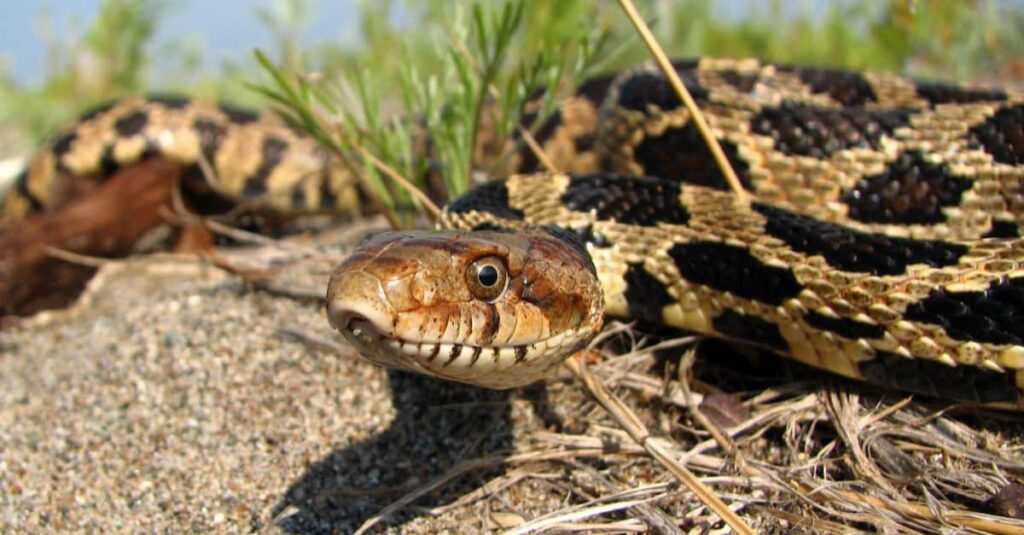
©Ryan M. Bolton/Shutterstock.com
Ranging between three and six feet long, the eastern fox snake is a large, powerful animal that kills by constriction. They prey mainly on rodents and birds but will eat anything that they are able to swallow. Eastern fox snakes are light to golden brown with dark brown spots on their dorsal side and a yellowish-colored belly. They are named for the strong scent that they give off when they are threatened as it smells like a red fox. Eastern fox snakes live in a variety of habitats —- including grasslands, prairies, marshes, and woodlands. In Ohio, they inhabit the shores and islands of Lake Erie, and the marshlands in the counties of Erie, Lucas, Ottawa, and Sandusky.
11. Dekay’s Brown Snake (Storeria dekayi)
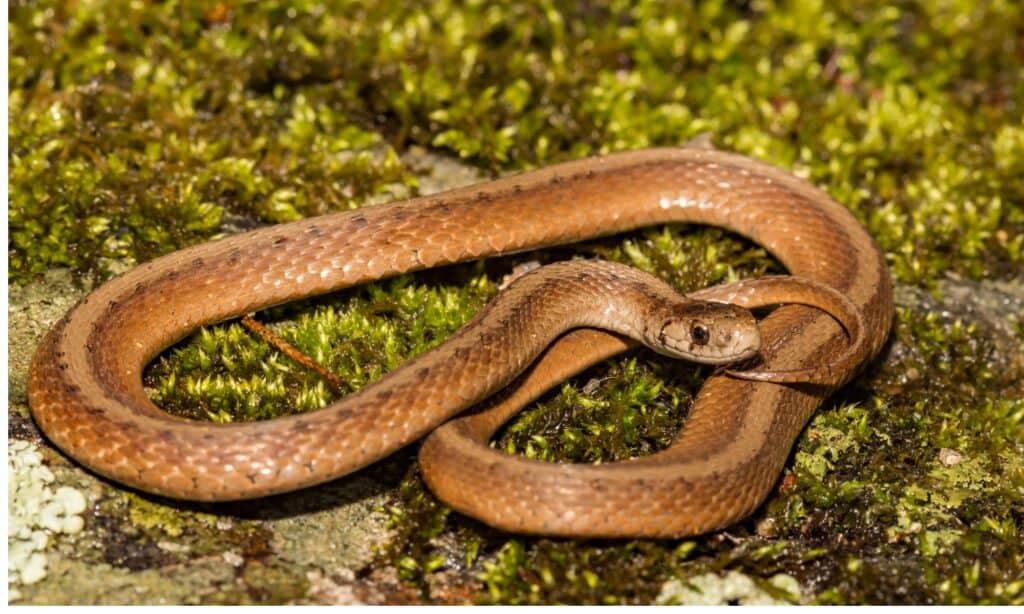
©iStock.com/JasonOndreicka
The final snake on the list is Dekay’s brown snake which is typically only between nine and 13 inches long. Dekay’s brown snakes are light brown with a light-colored stripe along their back. They also have several black spots on either side of it. Dekay’s brown snakes prefer to live in areas with damp soil — particularly forests and woodlands. They mainly occur in the northern region of the state, with some scattered populations in the central counties. Dekay’s brown snakes are not venomous and eat only small, soft-bodied animals such as worms.
The post Discover 11 Brown Snakes Slithering in Ohio (3 Are Dangerous) appeared first on AZ Animals.
from Animal News, Facts, Rankings, and More! - AZ Animals https://ift.tt/c4v5ZQj